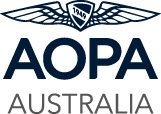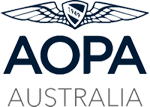COMMERCIAL PILOTS LICENCE (CPL)
What is a CPL?
A commercial pilot licence (CPL) authorises you to conduct private and commercial operations (refer to sub-regulation 2(7)(d) of the Civil Aviation Regulations 1988).
You can be the co-pilot in any operation and the pilot-in-command of any operation except the following:
- multi-crew aircraft in charter or regular public transport operations
- an aeroplane certified for single-pilot operations with a maximum take-off weight (MTOW) of more than 5700kg in regular public transport operations
- turbojet aeroplanes with a MTOW of more than 3500kg in regular public transport operations.
You must hold the appropriate aircraft category on your CPL and the class or type rating for the aircraft you want to fly. Refer to CASA’s Aircraft class ratings and Aircraft type ratings information sheets for more details.
If you want to fly as pilot-in-command or co-pilot in a multi-crew operation, as well as holding the appropriate aircraft rating, you must have completed an approved course of training in multi-crew cooperation. If you conducted multi-crew operations before 1 September 2015, you don’t have to complete that training.
How do I get a CPL?
You must be at least 18 years old to get your CPL. You also need to do the following for the category rating you want to get with your CPL:
- learn the theory
- complete flight training at a CASR Part 141 or 142 flight training organisation
- meet the minimum aeronautical experience requirements (see below for more information)
- pass the CPL theory exam for the category rating set by CASA
- pass a CPL flight test for the licence and category rating.
These requirements must be met for each additional category rating you apply for once you also have your CPL.
What is involved in learning the CPL theory?
The theory syllabus for the CPL includes subjects such as flight rules and air law, aerodynamics, meteorology, navigation, human factors, operation, performance and planning, power plants and aircraft systems.
You can study the theory yourself if you have a self-learning course or you can attend classes at a flight training organisation (contact a flight training organisation to work out the best way for you to complete the theory training for the CPL).
If you are completing an integrated training course, the theory training is incorporated into the CPL training course.
The CPL exams include seven exam subjects. Three of the subject exams are common and only need to be passed once. However, you need to pass all the exams within a two-year period.
If you already have your CPL and want to gain an additional category rating, you need to pass the remaining four category-specific subject exams.
What Flight Training is Required?
You need to complete a course of flight training with a Part 141 or Part 142 flight training organisation. It includes basic general flying, as well as cross-country and instrument flying.
There are two types of courses: integrated courses and non-integrated courses. Part 142 flight training organisations conduct integrated courses and Part 141 flight training organisations conduct non-integrated courses.
What is an integrated training course?
An integrated training course is an intensive program that combines ground theory with practical flight training in a structured course and is designed to be completed within a condensed period of time. Theory training is delivered in parallel to the practical training as a planned integrated sequence. The benefit of integrated training is that the flying experience required is reduced compared to non-integrated training.
What are the medical requirements for a CPL?
You need to have a Class 1 medical certificate to sit the CPL flight test, and whenever you are exercising the privileges of your CPL. Class 1 medical certificates are issued by CASA.
Since April 2018, holders of a CPL can undertake some operations with a Class 2 medical certificate. Refer to changes to medical certification.
If you are exercising PPL privileges, you only need a Class 2 medical certificate. If you are exercising RPL privileges, you only need a recreational aviation medical practitioner’s certificate (RAMPC), however limitations apply.
You need to carry your medical certificate with you whenever you are flying.
For more information on the CPL, download CASA’s fact sheet here:
https://www.casa.gov.au/files/getting-your-commercial-pilot-licence-fact-sheet-sept-2018


